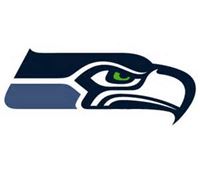 The NFL Draft has come and gone and I’m surprised at how little the league is embracing big data. Statistics and data show that it’s actually a detriment to take one of the top picks because you pay those players much higher salaries with no guarantee that they’ll actually live up to the hype. Seattle consistently traded down to lower picks which is the statistically good move. You get more picks at lower pay rates and therefore have a better chance at getting a great player. The book “Scorecasting” has a great chapter on this and you can read an excerpt about the draft on their site.
The NFL Draft has come and gone and I’m surprised at how little the league is embracing big data. Statistics and data show that it’s actually a detriment to take one of the top picks because you pay those players much higher salaries with no guarantee that they’ll actually live up to the hype. Seattle consistently traded down to lower picks which is the statistically good move. You get more picks at lower pay rates and therefore have a better chance at getting a great player. The book “Scorecasting” has a great chapter on this and you can read an excerpt about the draft on their site.
Here’s a summary of Seattle’s draft showing how they apparently used this data analysis to their advantage. They traded away their earlier picks and got three extra picks compared to what they started with.
1. #32 to Minnesota for second round (#40) and fourth-round (#108)
2a. #40 and fifth-round (#146) to Detroit for second-round (#45), fourth-round (#111) and seventh-round (#227)
2b. Paul Richardson (13, 45) WR Colorado
2c. Justin Britt (32, 64) T Missouri
4a. Cassius Marsh (8, 108) DE UCLA
4b. #111 traded to Cincinnati for fourth-round (#123) and sixth-round (#199)
4c. Kevin Norwood (23, 123) WR Alabama
4d. Kevin Pierre-Louis (32, 132) LB Boston College
5. Jimmy Staten (32, 172) DT Middle Tennessee
6a. Garrett Scott (23, 199) T Marshall
6b. Eric Pinkins (32, 208) DB San Diego St.
7. Kiero Small (12, 227) FB Arkansas
The NFL media machine really hypes up this event, but it’s going to be interesting to see what happens when all the teams wake up to the Moneyball approach.
